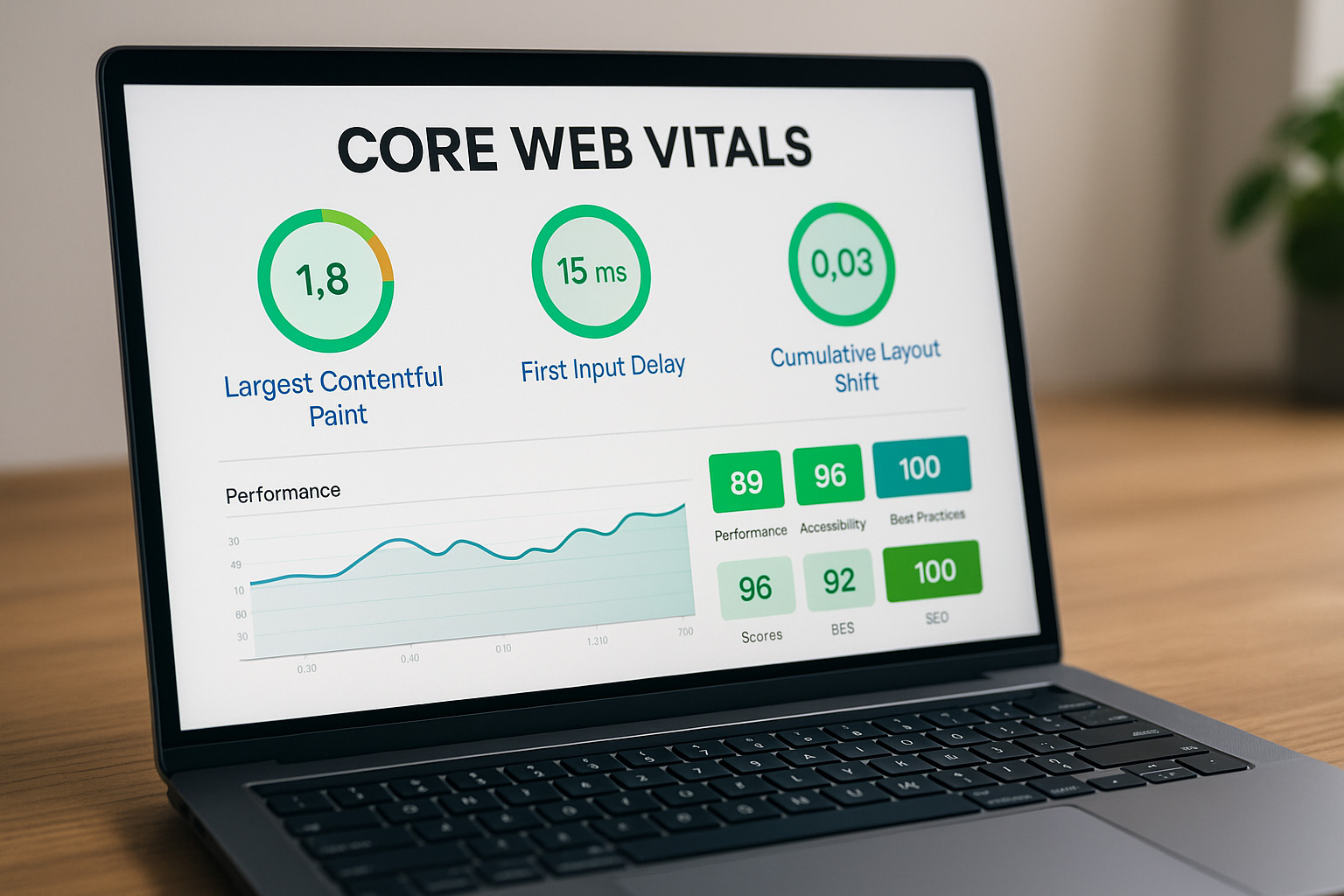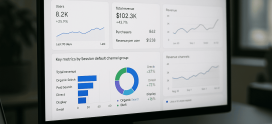
Core Web Vitals and SEO | Power Marketing International
The Role of Core Web Vitals in SEO: Why Speed and User Experience Now Go Hand in Hand
What Are Core Web Vitals?
In 2021, Google introduced Core Web Vitals SEO as part of its ranking signals. These metrics measure how quickly a website loads, how responsive it feels, and how stable it appears during use. Together, they shape the user experience and directly affect search performance. For businesses competing online, optimizing Core Web Vitals, website speed optimization is no longer optional—it’s a key part of SEO.
The Three Core Web Vitals
Largest Contentful Paint (LCP)
LCP measures how quickly the largest piece of visible content loads on a page. Ideally, this should happen within 2.5 seconds. Slow-loading content frustrates users and increases bounce rates.
First Input Delay (FID)
FID tracks how fast a site responds when a user interacts—for example, clicking a button or selecting a menu. A good FID score is under 100 milliseconds, ensuring users don’t feel stuck waiting for a response.
Cumulative Layout Shift (CLS)
CLS measures visual stability. If buttons or text shift unexpectedly while loading, it leads to poor user experiences. A good CLS score is less than 0.1, meaning the page stays stable as it loads.
Why Core Web Vitals Matter for SEO
Improved Rankings
Google uses Core Web Vitals as ranking factors. Sites that meet recommended thresholds are more likely to appear higher in search results, giving them a competitive advantage.
Better User Experience
Even without considering rankings, fast and stable websites keep users engaged. Visitors are more likely to stay, browse multiple pages, and complete conversions on sites that feel seamless.
Reduced Bounce Rates
Pages that load slowly or shift unpredictably often drive visitors away. By improving Core Web Vitals, businesses reduce bounce rates and improve overall site performance.
How to Optimize Core Web Vitals
1. Improve Page Speed
- Compress images without sacrificing quality
- Use modern file formats like WebP
- Enable browser caching
- Implement a content delivery network (CDN)
2. Enhance Interactivity
- Minimize JavaScript execution time
- Break long tasks into smaller, faster processes
- Prioritize loading for interactive elements
3. Stabilize Layouts
- Always set width and height for images and ads
- Avoid inserting new content above existing text
- Use CSS to ensure visual consistency
Measuring and Monitoring Core Web Vitals
Tools like Google PageSpeed Insights, Lighthouse, and Search Console allow businesses to monitor Core Web Vitals. Regular testing ensures sites continue to meet standards as updates or new features are added.
Balancing SEO and User Experience
Core Web Vitals highlight a shift in SEO from keyword-heavy tactics to user-focused performance. Businesses that invest in these metrics not only improve rankings but also deliver experiences that foster trust and loyalty.
Conclusion
Core Web Vitals link SEO and user experience like never before. By focusing on speed, responsiveness, and stability, businesses can improve their search performance while creating websites that users enjoy visiting. In today’s digital landscape, optimizing Core Web Vitals is not just about pleasing search engines—it’s about building a better online experience. For more information and questions please contact Power Marketing International at 772-5214539. In business for over 15 years PMI has continued to grow with the times and is able to offer the best and latest digital services. Their website is https://web-seo1.com.





